Following our initial look at Snake Eyes, we dive into character specifics. This time, the trope of the “mysterious stranger”… and how we’ll rescue him from an Abrams-style mystery box.
One of the appeals of Snake Eyes is his lack of identity, at least initially, much the same way many Star Wars fans (myself very much included) fell for Boba Fett. It’s the tantalizing trope of the mysterious stranger1—who’s behind the mask? What are they hiding?
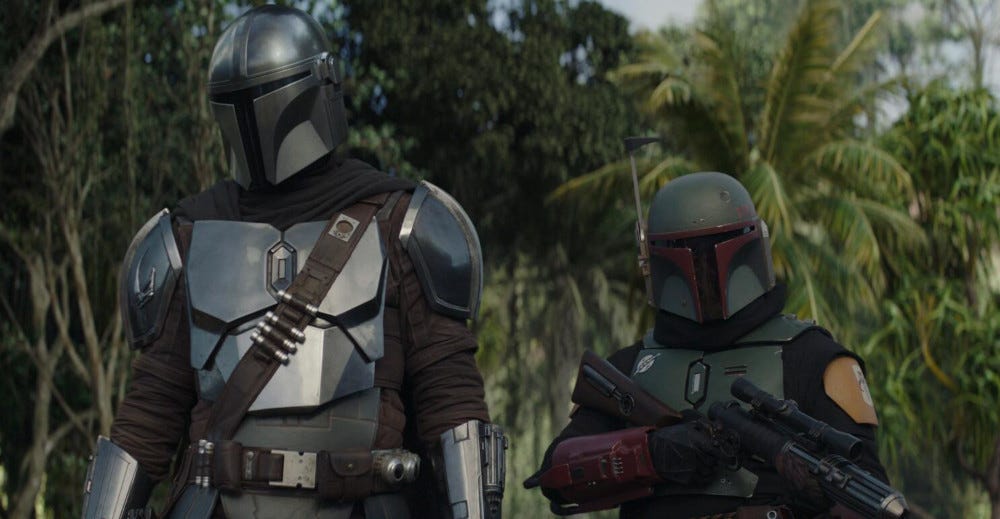
(In part, this is what I feel works better in The Mandalorian compared to The Book of Boba Fett. In broad strokes, they’re very similar characters. The Mandalorian, however, keeps his helmet on—retaining some outward sense of mystery even as we’re still able to learn a great deal about his character.)2
The mysterious stranger helps to intrigue the audience. We’re curious! We like uncovering secrets—especially if we feel there’s something important being hidden. So instead of having to introduce a new character, their backstories, motivations etc. to us, the mysterious stranger compels the audience to seek out these details for themselves.
However, there’s an inherent promise being made to the audience. We need the sense that there actually is an answer to their mystery, and that it’s compelling enough to wait around for its resolution.
And while this may sound obvious, we want confidence that the storyteller already has some answer to the mystery themselves.
Let’s Build a Mystery Box
As I’m no doubt mistakenly defining, a “mystery box” is some mysterious plot or worldbuilding element—which may be a literal locked container, an object of unknown purpose, a forbidden area, or even our mysterious stranger—that invites curiosity and awaits explanation.
It’s a common complaint about Lost (a show which I dearly love regardless) that the showrunners dropped several “mystery boxes” throughout the series that they clearly hadn’t prepared with an explanation beforehand:
What is the smoke monster? What’s with the giant statue having 4 toes? Why are polar bears on a tropical island? What exactly is the true nature of the island at all?
To be fair, most if not all of these questions were eventually answered in some fashion. The issue is that these answers came fairly late in the series and felt constructed along the way. As part of the audience, I often didn’t believe the writers knew what was in their own mystery boxes beforehand any more than we did.
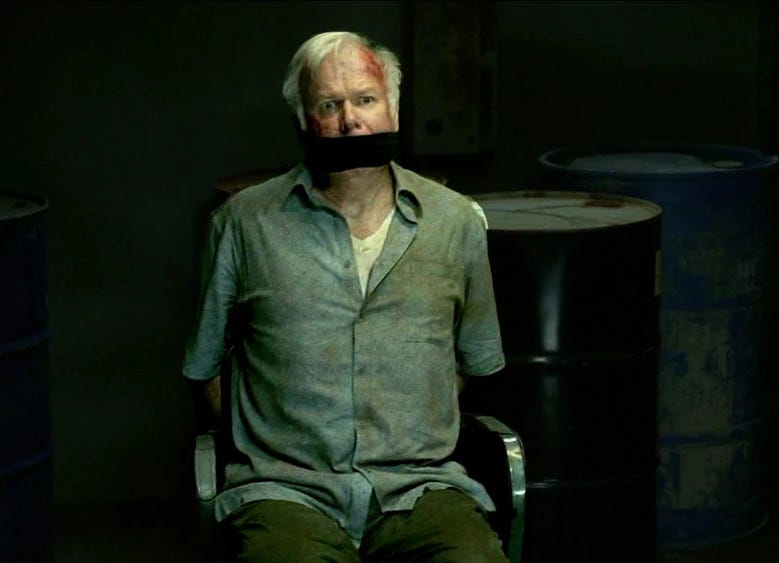
Part of this is simply the enormous efforts of constructing a complex, long-running series that evolves over time.
Another part comes from J.J. Abrams’ preference for mystery boxes. He’s said as much in his TED Talk, where he shows off “Tannen’s Mystery Magic Box”. This was a box he once bought as a kid from a magic shop in Midtown Manhattan. The premise being that for $15, the box contained $50 worth of magic tricks, but you wouldn’t know exactly what was inside until you bought the thing.
J.J. Abrams did buy the thing, and to this day has never opened the box.3
For Abrams, the mystery of what could be in the box outweighs whatever actually is in the box. As he puts it, the box represents infinite possibility, hope, potential.
“Mystery is more important than knowledge.”
Which may be true during the creative process. But a mystery, a truly satisfying one at least, eventually delivers an explanation. Otherwise it’s not really a mystery at all, it’s just something that feels “mysterious”, or weird, or odd. And I believe that something needs be inside the box before it’s first presented to the audience. An explanation, even a nascent one, to build around and tease out, so that the audience has confidence in the mystery itself.
In other words, Schrödinger's Cat is not a good enough placeholder.4
The Mystery Box as a Writing Challenge
When it come to writing, two general camps are often considered to be plotters (those who carefully outline their story ahead of time) and seat-of-the-pantsers (those who discover where their story is going along the way). Myself, I tend to start with a loose outline but very much discover things once I get going; I find the act of writing to be quite revelatory, and often excitingly so. And a lot of that discovery happens along the way in drafts.
Even Tolkien did not always know the full extent of his stories at first. Take Strider, the quintessential mysterious stranger. In his letter written about The Lord of the Rings, Tolkien notes: “I met a lot of things on the way that astonished me… Strider sitting at the corner of the inn was a shock, and I had no more idea who he was than Frodo.”
Creating a mystery box can be a good writing challenge. The Lost writing room set out many of their mystery boxes in part to challenge themselves to find solutions along the way. And it is thrilling to paint your characters into a corner to see how get themselves out of it (characters can become surprisingly clever, when pressed).
The difference (I believe) is that a mystery box should be for you, the writer, to solve first. It’s not meant for the audience to encounter until you already know something about what’s inside. Lost was well underway and the writers were still trying to figure out what was in their boxes (while also keeping tabs on the community’s own theories and discussions).
And we see this in other projects as well: We never really learn how Maz Kanata found Luke’s lightsaber in Star Wars: Episode VII (“good question, for another time,” that simply doesn’t get answered). Rey’s parentage felt batted around between movies like a pass-the-story writing exercise.
Granted, many a series, whether TV or fiction or anything else, have certain corners they aren’t fully fleshed out at the start. But for an audience to have faith in the story, and especially a developing mystery, they need confidence that the writer has some answers of their own already.5
Revealing the Mystery
Not all solutions are satisfying. Last time, I wrote about my own disappointment that the mysterious figures obscured on the backs of the Return of the Jedi packaging turned out to be Ewoks.
But you still need to have one. It’s too easy to just walk away from a mystery box because leaving it unopened allows it to maintain its mysteriousness. That’s akin to the adage of how the best player on a football team is the backup QB—expectations remain so high because he hasn’t yet taken the field and proven them right or wrong.
But at some point, he has to play or we’ll never know. (He’s just remains Schrödinger's Quarterback, I guess?) A risk needs to be taken by placing something within the box, and revealing it.
Even then, not everything needs to be revealed at once. But a story needs to parse out some answers along the way or risk alienating—or even worse, boring—the reader. Going back to the start of this discussion, can you keep the Mandalorian’s helmet on and still make us feel like we’ve uncovered his character?
Likewise with Snake Eyes, as much as we love the man of mystery.
When it comes to a mysterious stranger, some revelations can help us understand and make sense of a character.
We learn, for example, that Snake Eyes remains a loner due to the tragic loss of his family after his return from war, as well as his flight from Japan after the death of his Master. That his steadfast commitment to the G.I. Joe team stems from their recruiting him afterward and giving him back purpose. And that he wears a mask and doesn’t speak because he was severely disfigured on an early mission.
Other revelations can help advance a storyline, even while adding further intrigue.
We learn that secret tattoos on Snake Eyes’ arm connect back with his martial arts training back in Japan—along with his mortal enemy, Storm Shadow—a figure who believes Snake Eyes responsible for the death of their mutual Master.6
And now there’s another mystery to solve!
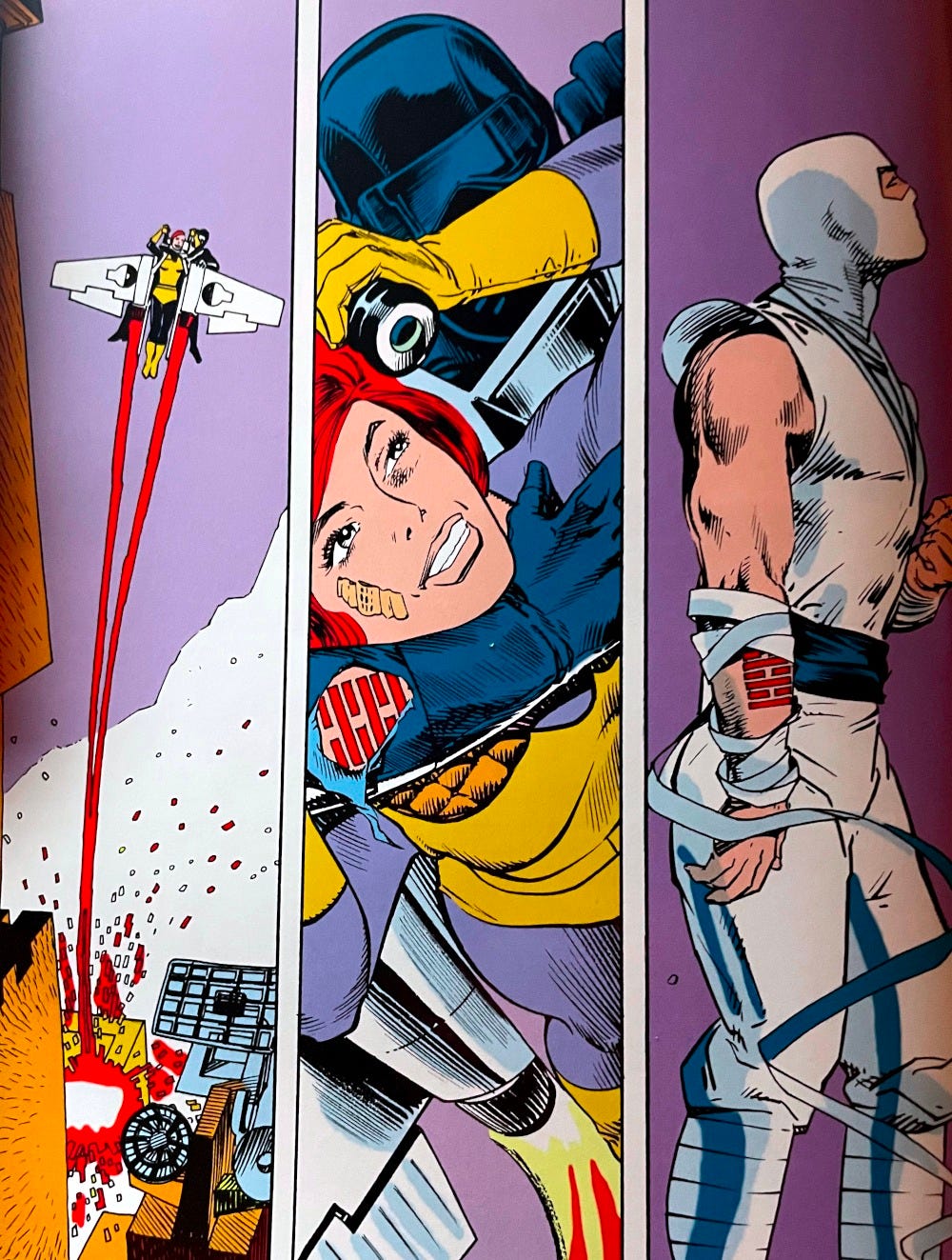
Next time: The mysterious stranger in TTRPGs.
Tantalize: From the Greek myth of Tantalos, a rich king who offended the gods, and so in the afterlife was made to stand in a lake, hungry and thirsty. Every time he knelt for a drink, the water lowered out of his reach. Every time he reached for fruit up in the branches above, they likewise moved further away.
Star Wars, as a franchise, famously tends to over-explain just about every detail, but sometimes this really does improve its world-building. The Death Star’s exhaust ports are vulnerable because a sympathetic engineer intentionally designed that flaw. The Mandalorian keeps his helmet on because it’s a religious tenet of his adoptive people.
Want to know what’s actually inside Tannen’s Mystery Magic Box? Here’s a blogger who bought a similar one and opened it.
Like Tannen’s Mystery Magic Box, we’ve probably all seen similar discount “mystery boxes” sold in comic stores and the like. My family loved when our local bookstore, Pegasus Book Exchange, offered their own version during the 2020 COVID holiday season. My wife even still remembers the “mystery bag” her mother once cruelly refused to buy her at Sugarman’s Department Store.
Read more about Lost’s mystery boxes at The Pitch of Discontent (specific post here) and Lost in general at
substacks.Shelly Mazzanoble demands credit for the previous joke that “Somehow the guy dressed all in black named Snake Eyes was not part of Cobra.” It’s true. It’s her joke.




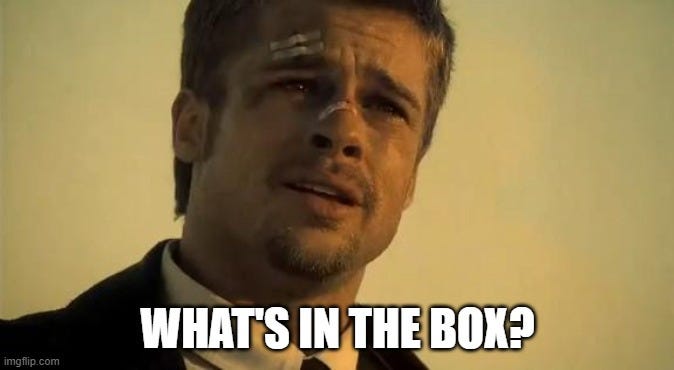
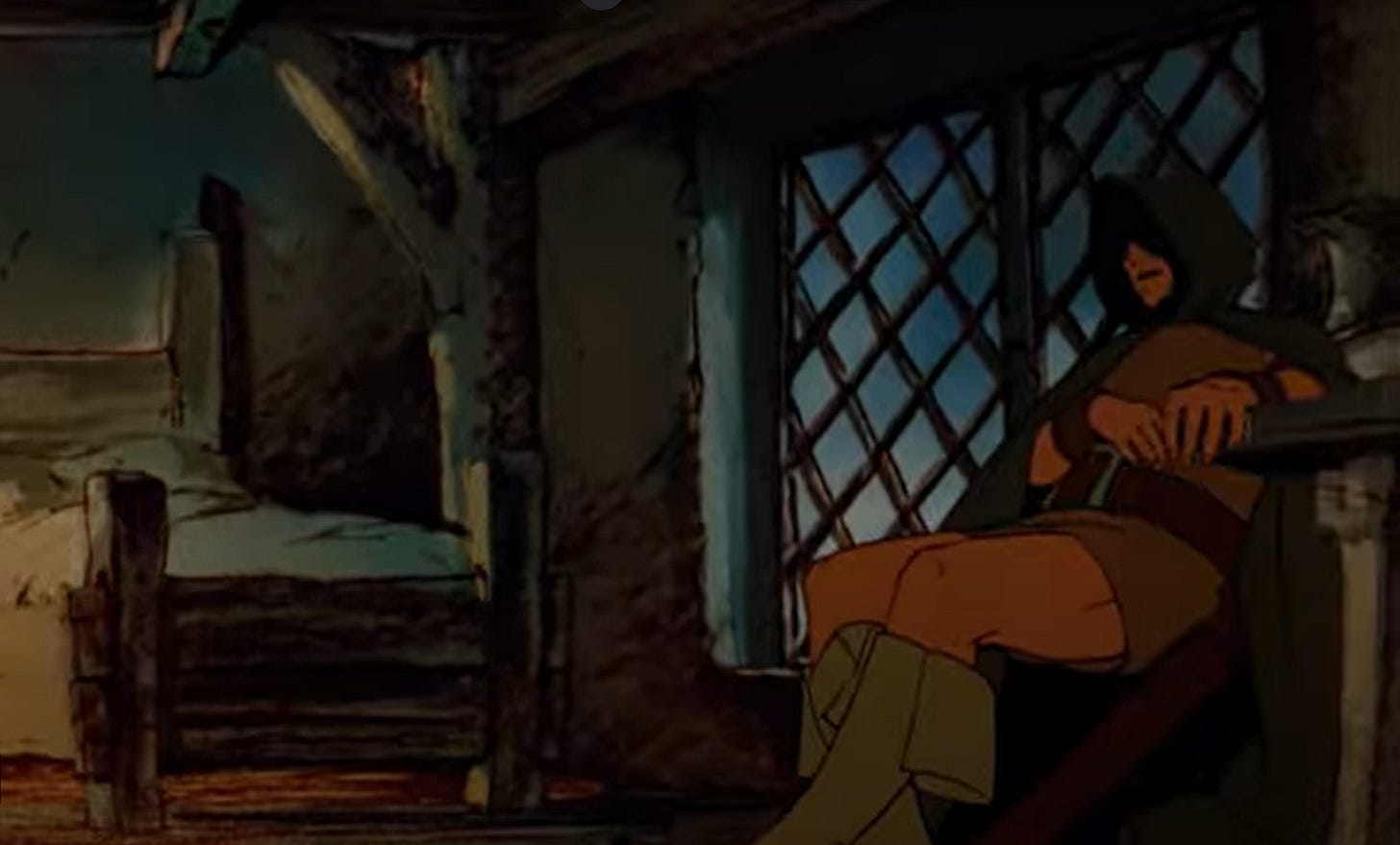
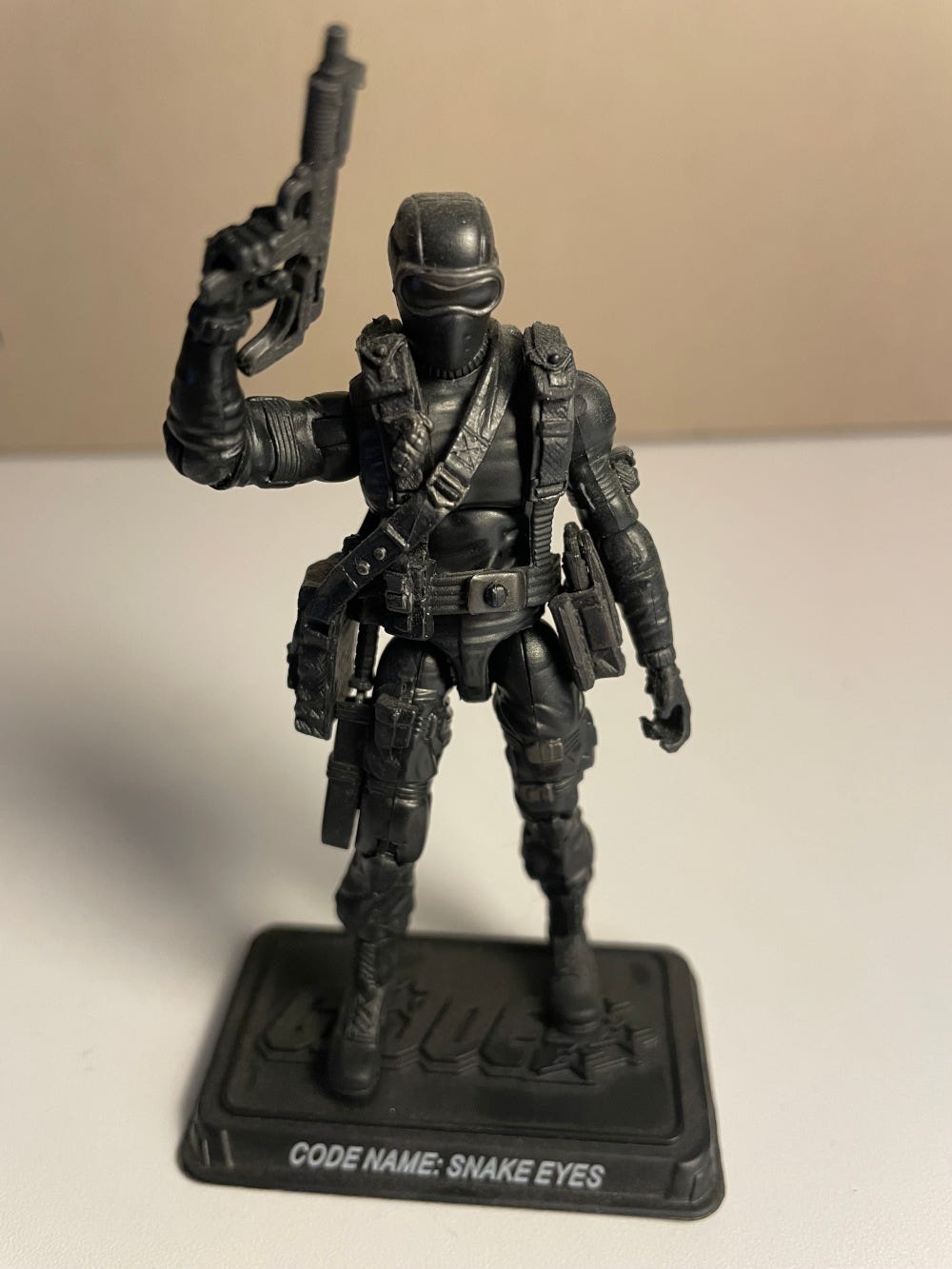
Thank you for the credit however, I didn’t “demand” it. Just sort of haughtily noted I did not receive it. Also it wasn’t a “joke” so much as incredulousness over the very obvious oversight!